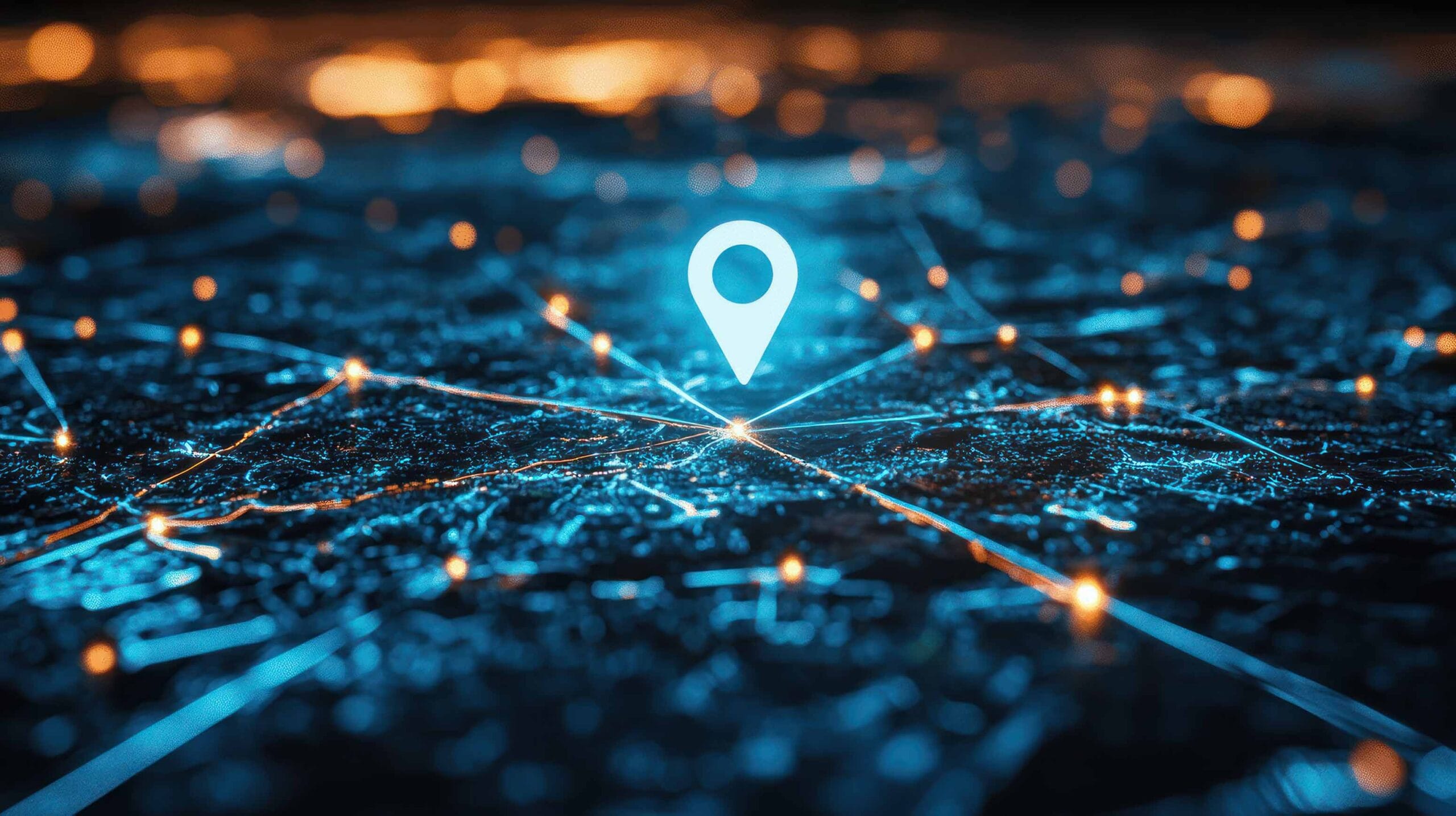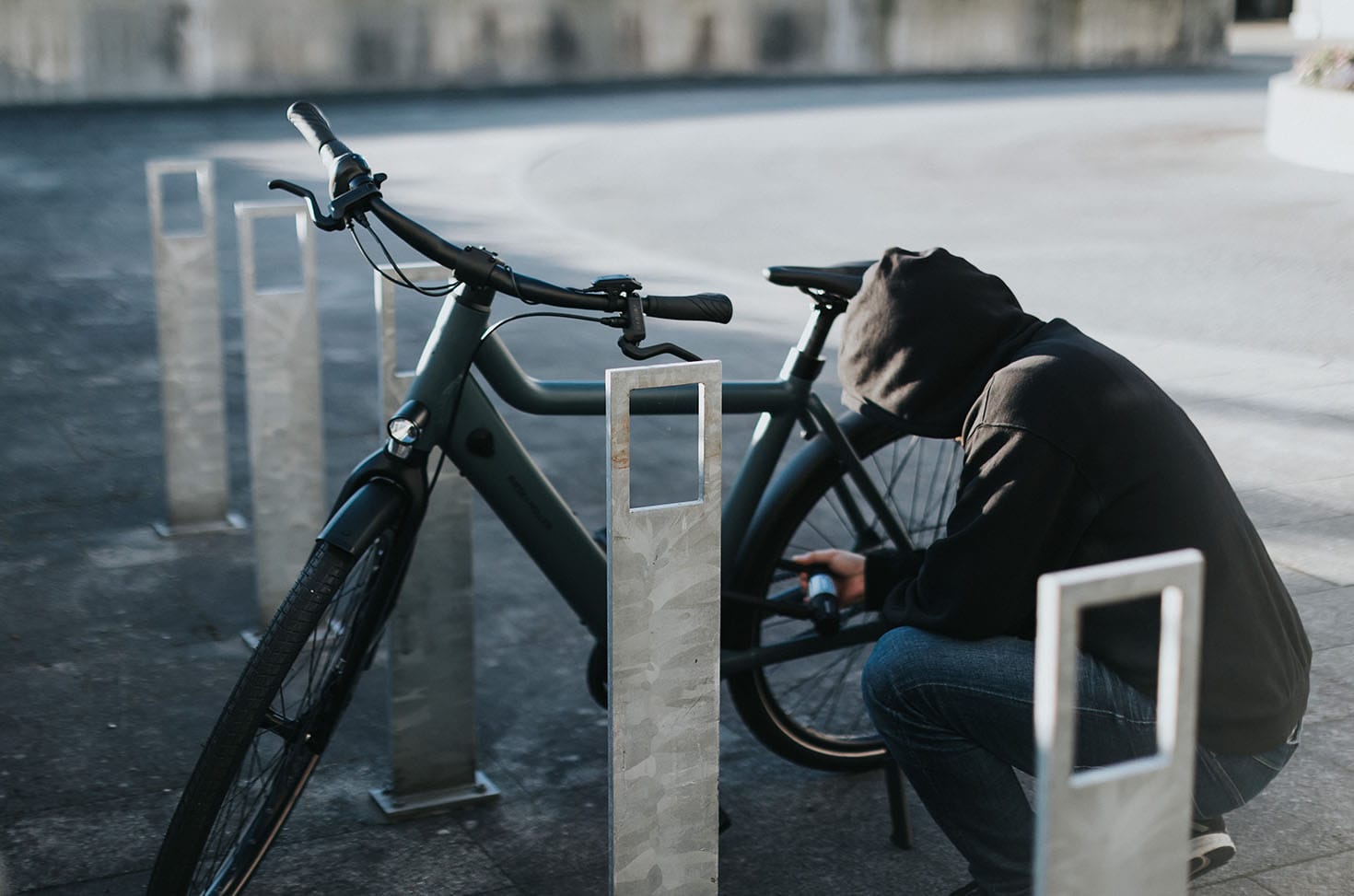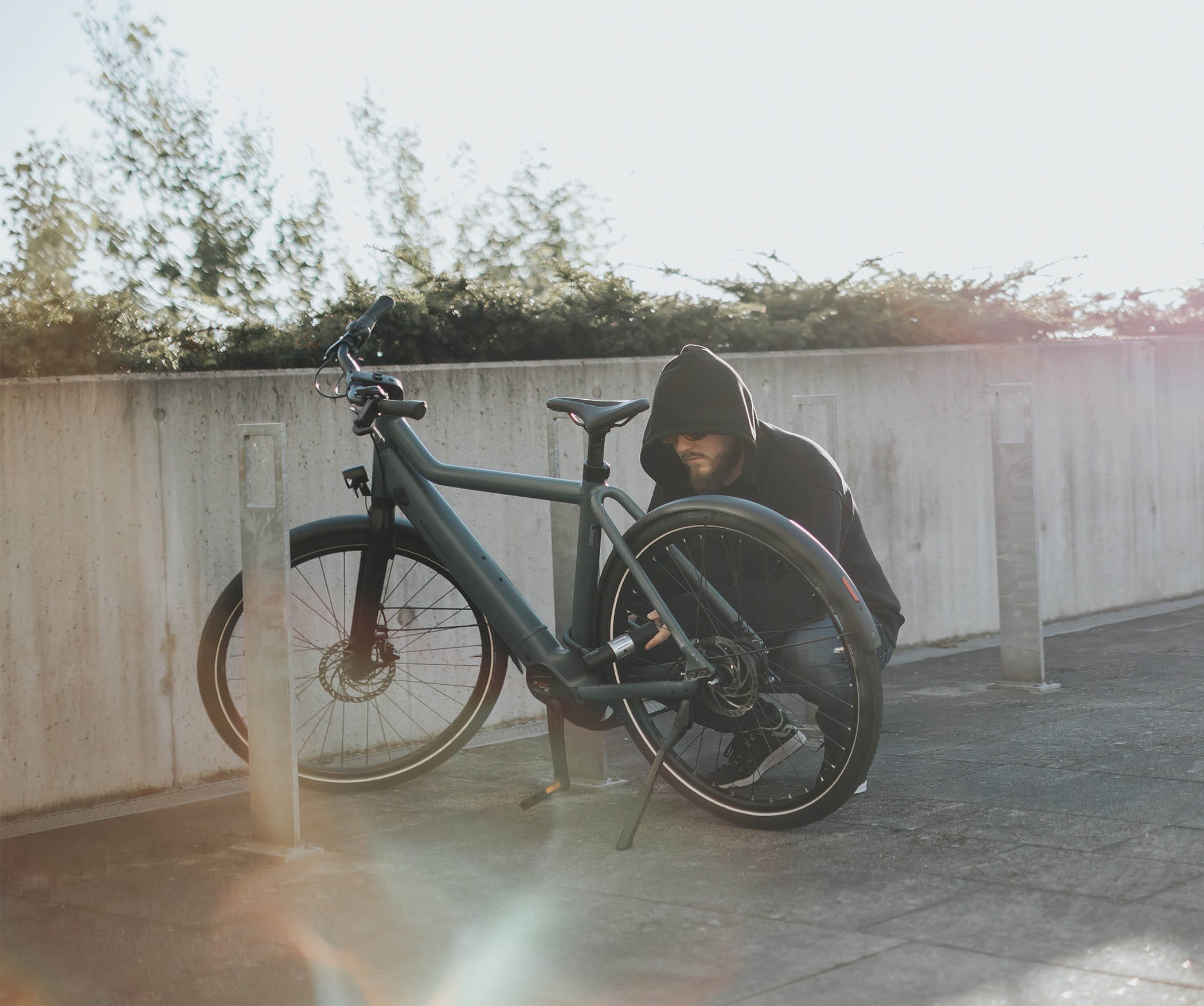Apple AirTag vs. GPS tracker
Which device really protects your bike from theft?
An Apple AirTag is small, inexpensive and handy for tracking keys or wallets, but can it really protect a bike? While both an AirTag and a GPS tracker promise location tracking, they work very differently. Choosing the right tracking device, whether an Apple AirTag or a dedicated GPS bike tracker, can mean the difference between recovery and permanent loss. Keep reading to learn how each device works, view a comparison table and choose the right GPS tracker to protect your bike.
Apple AirTag as bike tracker for theft protection
Bluetooth-based trackers such as the Apple AirTag, Tile and Samsung SmartTag are small devices designed to locate everyday items like keys, wallets or bags when they’re misplaced nearby. When a bike is stolen, recovery is unlikely without significant luck when using an AirTag (sometimes incorrectly spelled Apple Air Tag).
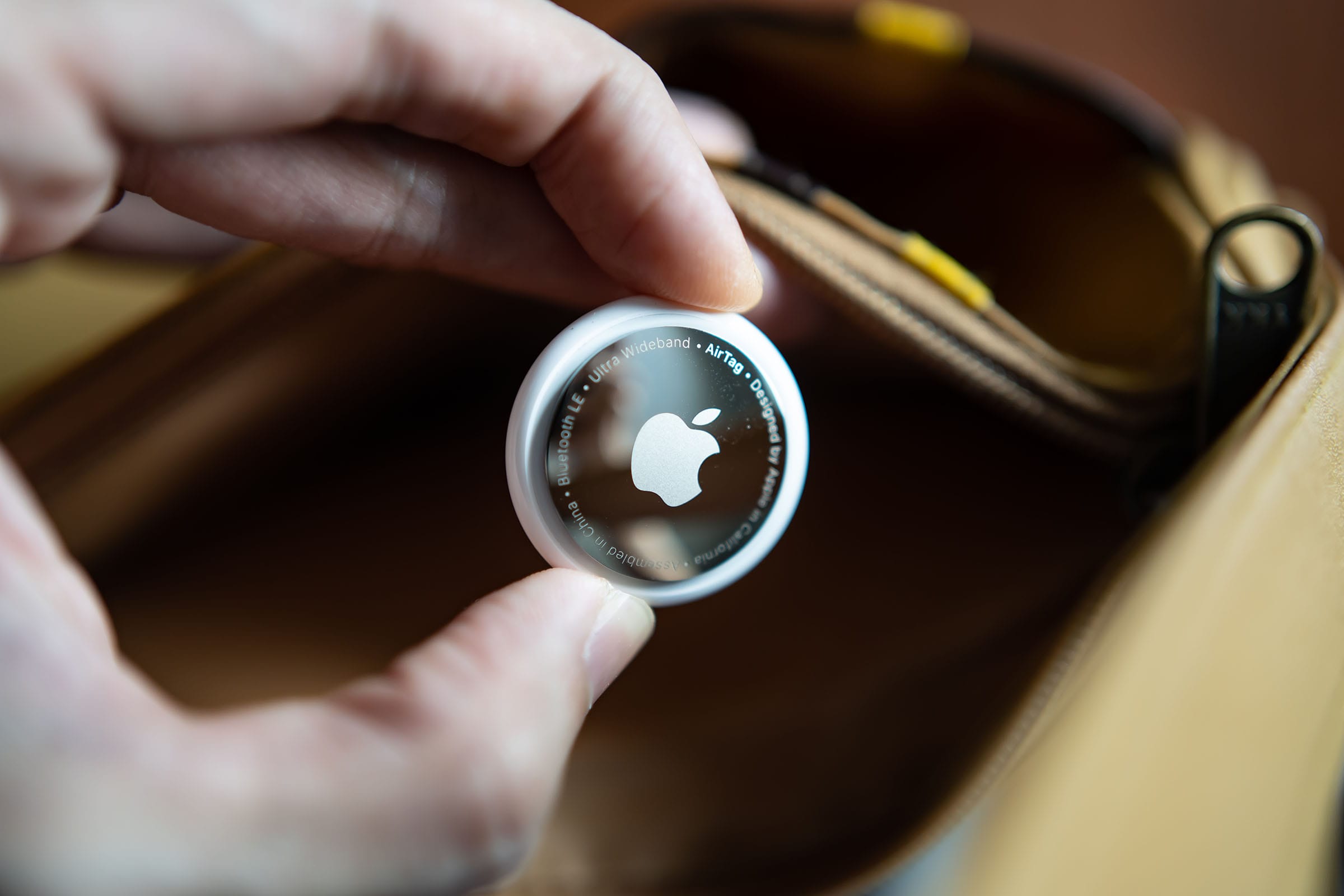
Here is why:
1. AirTags rely on other Apple devices: You can either locate your AirTag over a very short distance using Bluetooth signal (max. 30 meters range) or use the crowd network when your AirTag is further away. For this, there must be another iPhone or Apple device within range that has the “Find My” app installed. They work by “piggybacking” on nearby devices of the same network. But if there’s no piggy, there’s no ride… and you will never find your bike again.
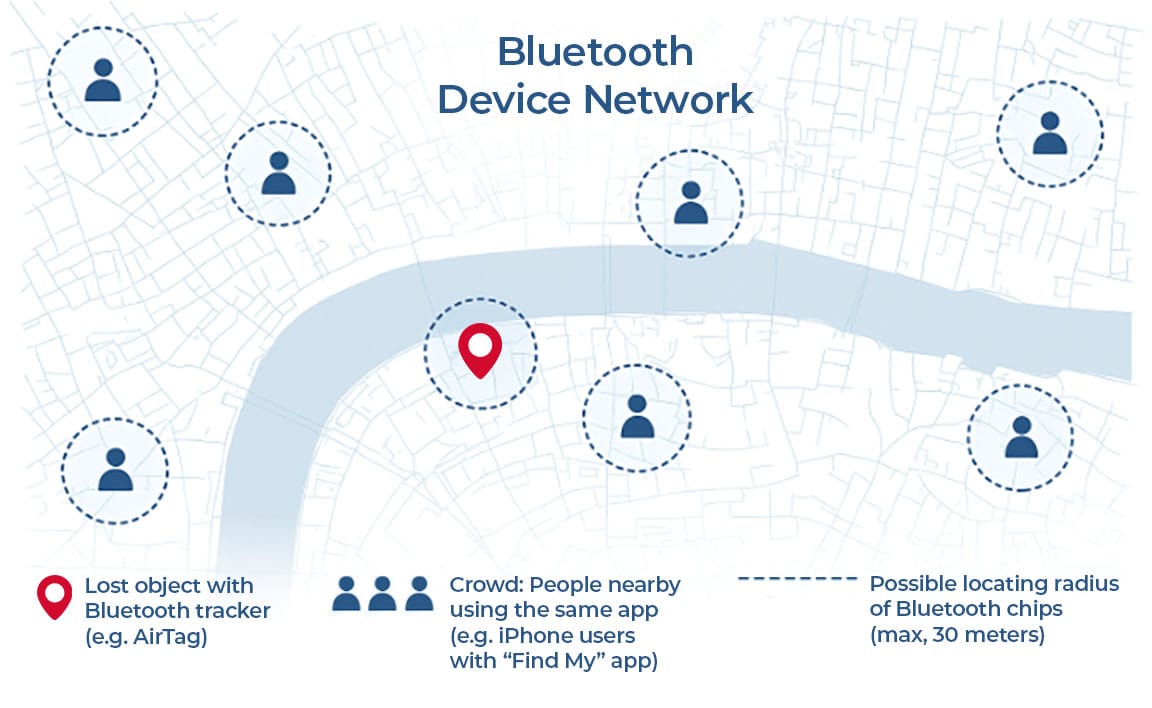
2. Anti-stalking feature: Because AirTags rely on a crowd network, they include safeguards against unwanted tracking. If an iPhone that doesn’t belong to the AirTag’s owner detects the same AirTag moving with it for some time, it will display an “AirTag Found Moving With You” alert. The person with the iPhone can then make the AirTag play a sound or disable it. While this protects user privacy, it becomes counterproductive in the event of theft.
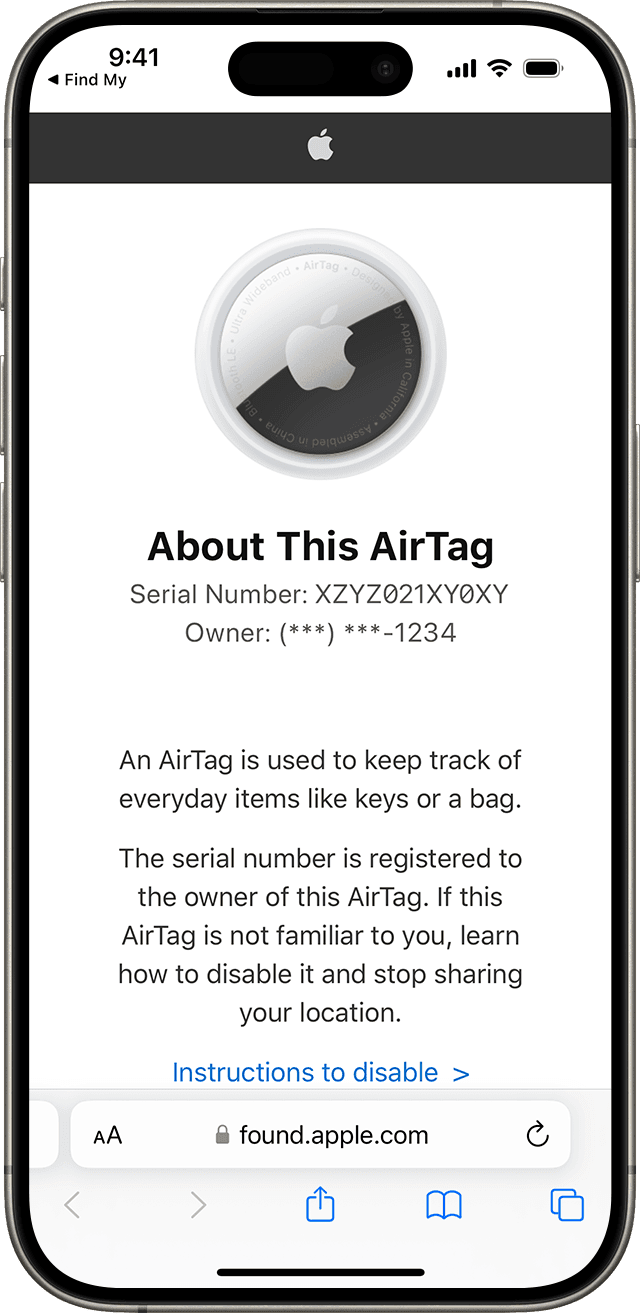
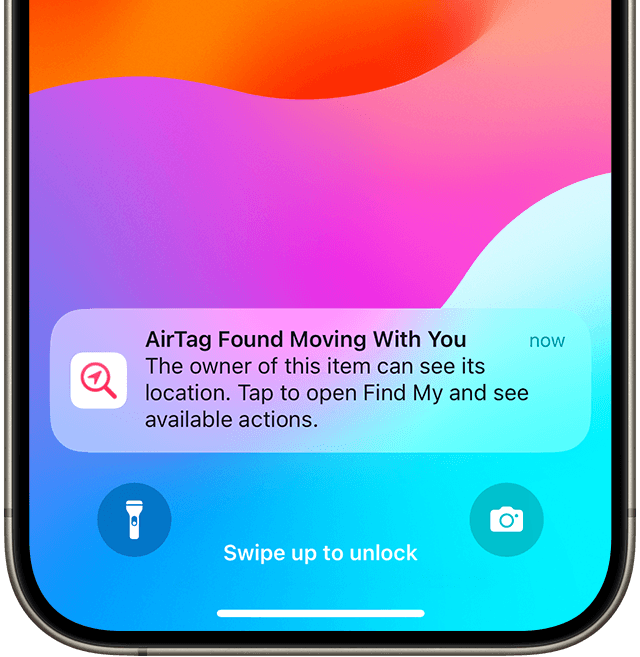
The bottom line is Bluetooth trackers like the AirTag (and others that work the same way) are practical for misplaced items, but they are not reliable for bike security in case of theft.
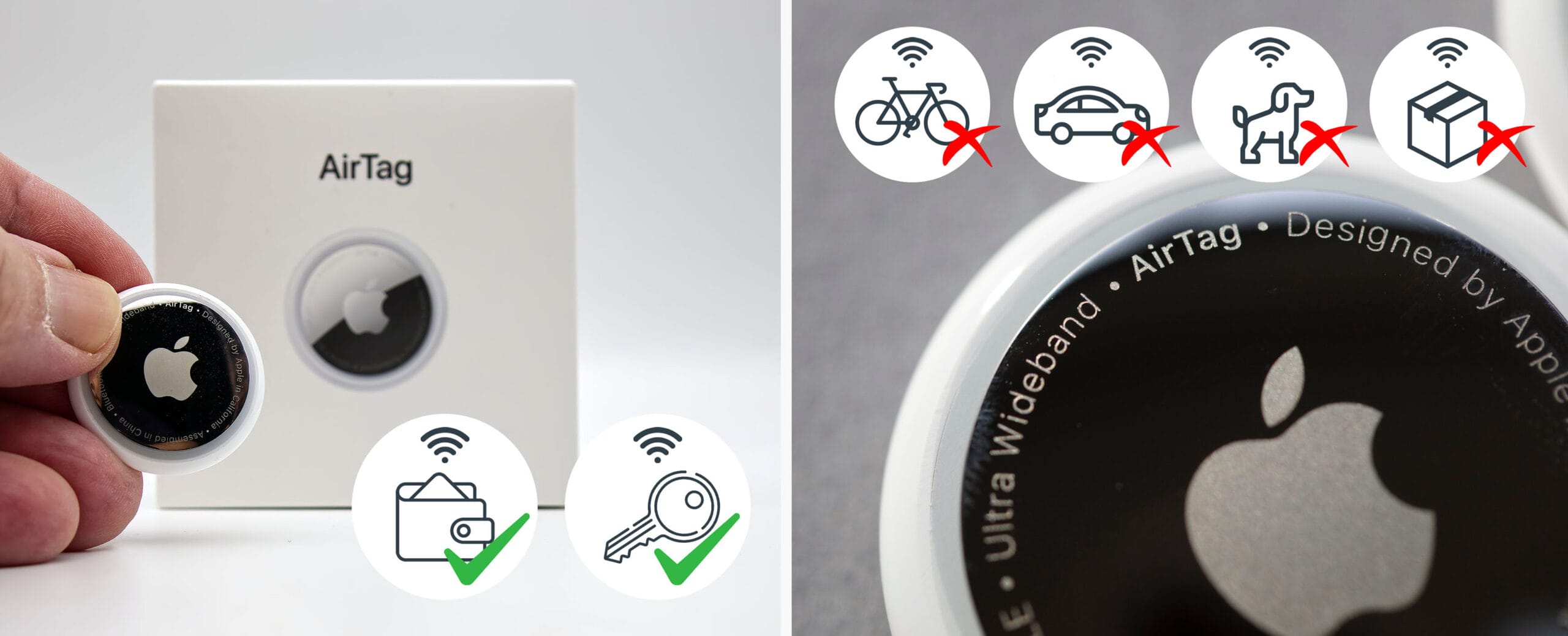
GPS tracker with integrated eSIM for your bike or e-bike
Unlike Apple AirTags, true GPS trackers locate and transmit the exact position of moving objects and don’t need nearby phones to work. They combine two separate systems: Both the satellite link and the cellular connection are essential. The satellite provides the position while the eSIM sends that data to your phone through the mobile network, allowing the tracker to operate completely on its own. No nearby devices are required.
This is why trackers with an integrated eSIM require a subscription to cover the eSIM’s cellular data cost. But not all GPS trackers are equal.
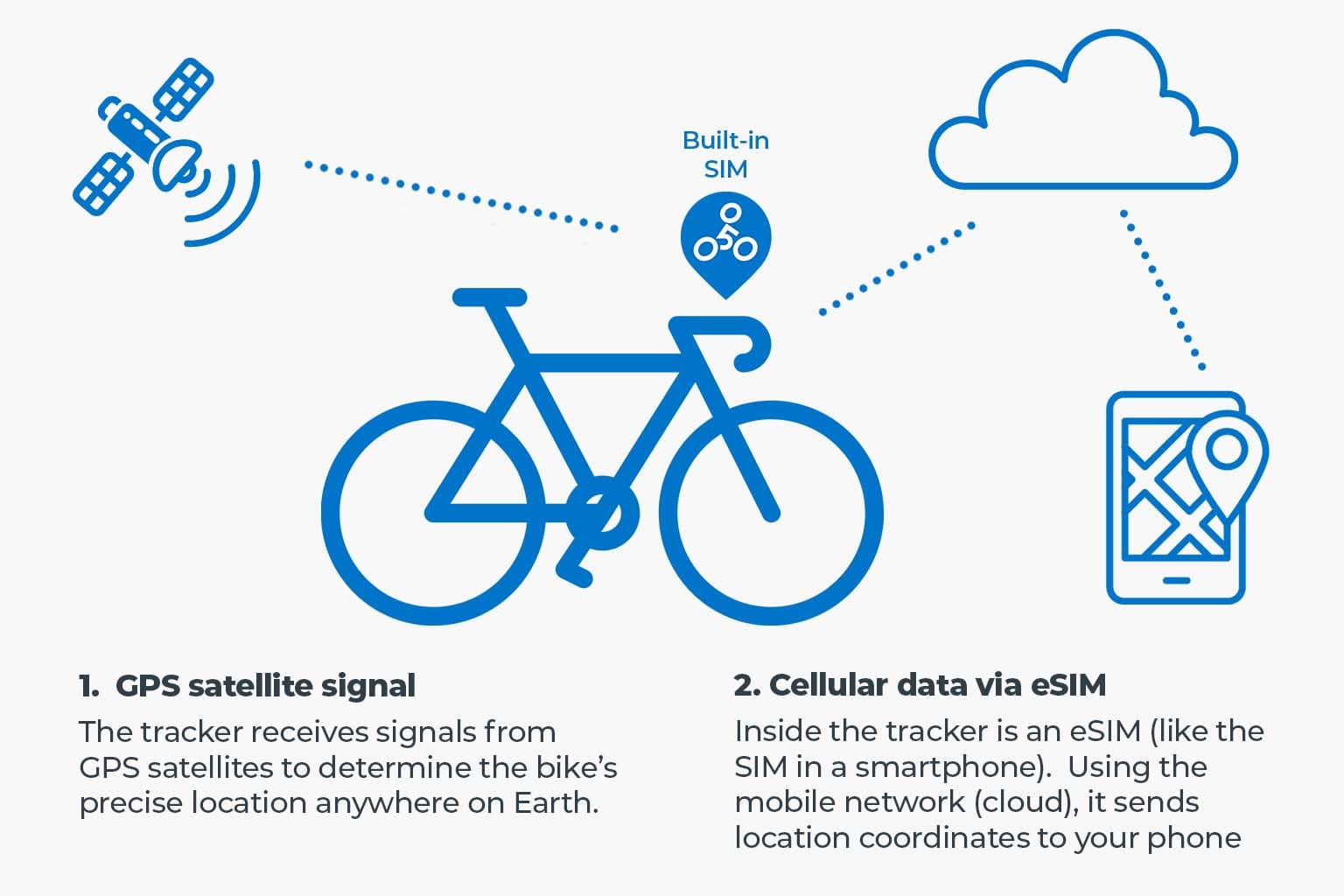
Why multi-signal tracking technology matters
The most effective bike trackers today don’t stop at GPS. They use multi-signal tracking technology, like the BikeFinder Gen2 tracker, which combines GPS with Wi-Fi, LPWAN and Bluetooth. This unique combination of technology ensures optimal location data, even in challenging environments such as garages, dense cities and remote areas.
See how BikeFinder’s multi-signal tracker protects your bike anywhere. Learn more here.
AirTag limitations vs. GPS tracker advantages
1. Bike stolen at a train station (after peak times)
- Bluetooth-based tracker: you’re hoping a person with a phone enabled for crowdsourcing walks by. At the same time, if the thieves have such a phone, they will get notified that the tracker is moving with them, giving them the option to remove or deactivate it.
- Advanced GPS tracker: you get instant updates, no matter who’s nearby. The thieves don’t get alerted about the tracker.
2. Thieves load your bike into a van and hit the highway
- Bluetooth: connection is lost almost immediately.
- Multi-signal GPS: keeps transmitting as the van speeds toward a warehouse, a border or even onto a ferry crossing. You’ll see the route live, turn by turn.
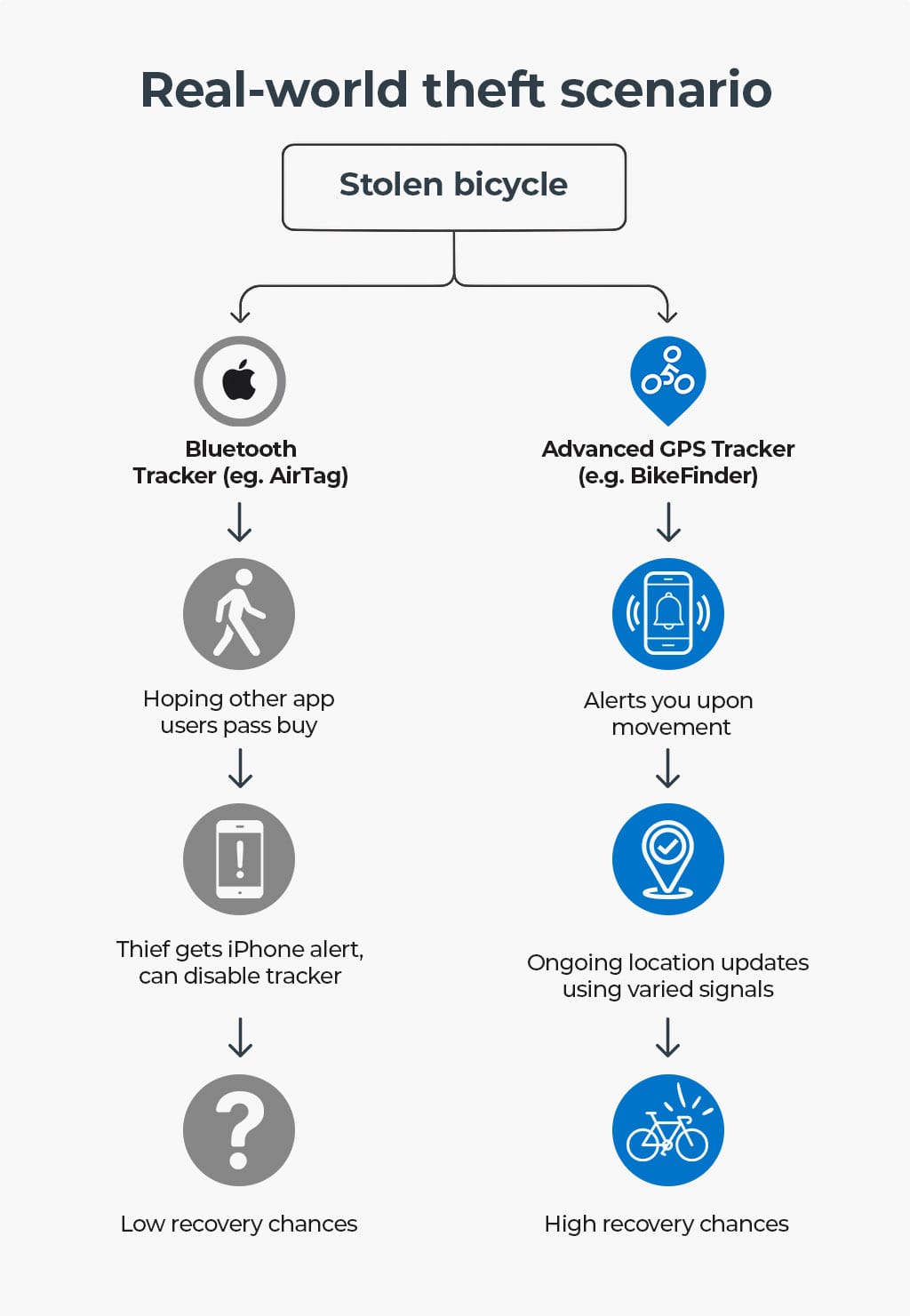
That’s the difference between technology designed to locate misplaced keys and technology built for recovering stolen bikes.
Comparison table of Bluetooth vs. GPS tracker with eSIM
| Feature | AirTag | BikeFinder Advanced Tracker |
| Signal range and update | Relies on other devices nearby (crowd network from Apple “Find My”) for location updates. | Works across cities and countries with continuous signal updates of moving objects. |
| Accuracy | Completely dependent on crowd signals. Generally accurate to a few meters near an iPhone, less accurate when last seen. | GPS gives the general location (about 5–10 meters), but advanced trackers also use Bluetooth to narrow the area down to 2–5 meters. |
| Reliability in various environments | Limited when far from other users participating in the crowd network. Urban areas with dense users work best. | More consistent overall, almost anywhere outdoors, though signals can be obstructed in deep buildings or tunnels, similar to how a smartphone can lose signal in certain areas. A multi-signal setup ensures fallback when GPS is unavailable. |
| Battery life / charging | Very long life (6 months to 1+ year) with replaceable coin cell. | Shorter battery life due to GPS and cellular power consumption. The tracker lasts a few weeks, depending on how often the bike is moved. Keep in mind that smartphones, which also use cellular network, usually last no more than a day. |
| Cost / Subscription | Low upfront price (≈25-40€). No subscription. Need to buy coin batteries. | Higher upfront cost (≈100-250€) plus ongoing cellular/SIM subscription (2-6€/month) for data service. |
| Best for | Everyday items: keys, wallets, bags, finding misplaced items at home or in a crowded area. | Theft protection for vehicles, bikes, boats, valuable gear, long-distance travel and fleet tracking. |
How to choose the best GPS tracker for your bike or e-bike
Key features:
✓ Reliable location data: continuous in-app updates via dedicated signal technologies.
✓ Integrated eSIM: provides independent connectivity (typically requires a subscription).
✓ Bike-specific design: hidden mounting and tamper-resistant tracking hardware.
✓ In-app audible alarm: alerts you when the bike is moved.
✓ Dedicated customer support: direct access to a specialist for theft-recovery guidance.
Additional features:
✓ Optional insurance: often competitively priced, thanks to the tracker’s high recovery rate.
✓ Built-in battery for power management: for traditional bikes without a motor.
✓ Connectability to an e-bike’s electrical system: reducing the need for manual charging.
✓ Curved handlebars: Flexible design for an easy fit.
In summary
AirTags are inexpensive and ideal for finding nearby items like keys or wallets. GPS trackers, by contrast, offer global coverage and continuous updates of moving objects in any environment, making them far better for theft protection, such as safeguarding your bike. They cost more and typically require a subscription for eSIM data.
So ask yourself: is your bike worth protecting? If so, a dedicated bike GPS tracker is the right choice.
At BikeFinder, we’ve developed an advanced bike tracker with multi-signal technology, integrated eSIM and optional insurance for cyclists who refuse to compromise on security. Hidden in your handlebars, powered by multi-signal technology and backed by real customer support, it’s premium protection you can count on.
👉 Get a BikeFinder tracker here and ride with confidence knowing your bike is always secure.
Because when the worst happens, you don’t just want to wonder “where’s my bike”, you want the confidence to say, “I can find my bike” and bring it home.
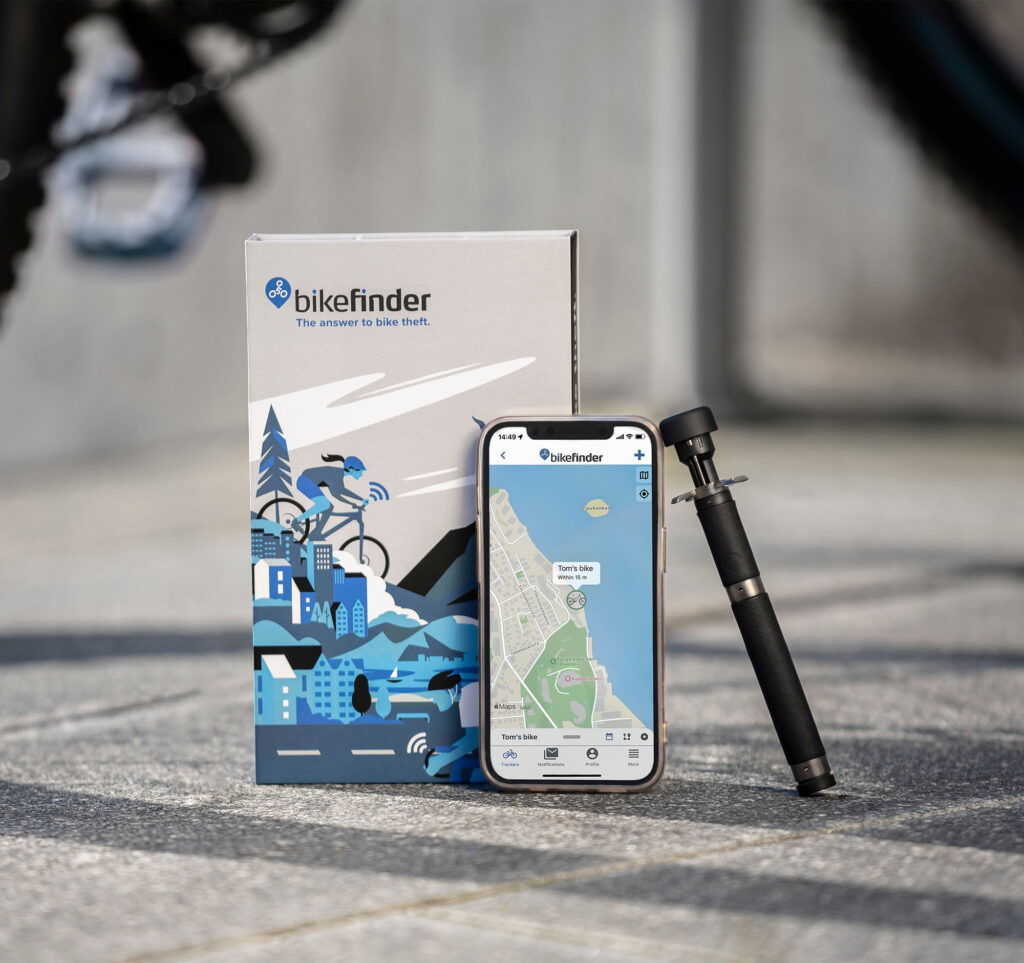
Frequently asked questions about bike trackers
Can I use an AirTag to track my stolen bike?
You can try, but recovery is unlikely. AirTags rely on nearby Apple devices running the Find My network to relay their location. If no iPhone passes close to the stolen bike or if the thief sees the “AirTag Found Moving With You” alert and removes it, the signal stops. AirTags are great for misplaced keys or bags, but not for dependable bike-theft protection.
Do I need a subscription for a GPS bike tracker?
Yes. A true GPS tracker communicates through an integrated eSIM and cellular network, which requires a small monthly data plan. The subscription covers the mobile data that sends live location updates to your app, ensuring global tracking independent of nearby phones.
How long does a GPS tracker battery last?
Battery life varies with movement and update frequency, but most dedicated bike GPS trackers last 2–8 weeks per charge, depending on how frequently they update their position data and communicate with the network. Devices with motion sensors and power-saving modes can last longer when the bike is stationary.
How accurate is a GPS bike tracker?
Precise trackers use GPS to determine the general location (within about 5–10 meters) and Bluetooth to narrow it down to 2–5 meters, providing accurate, turn-by-turn positioning that can be shared directly with law enforcement. Additional signal technologies, like those used in BikeFinder, enhance coverage and improve location accuracy.
Is a GPS bike tracker worth the cost?
The decision depends on how much your bike means to you, both financially and emotionally. With rising prices for e-bikes, cargo bikes and high-quality commuters, theft is more common, and trackers are increasingly popular. A quality GPS tracker significantly increases the chance of recovering a stolen bike. While the upfront price and small monthly subscription may seem high, they’re minimal compared to the increasing value of a bike, and the peace of mind of always knowing where your bike is.
How to track a stolen bike?
- Report the theft immediately
- File a police report with the bike’s serial number, tracker data and last known location. Quick reporting improves the chances of recovery.
- Alert the community
- Post the bike’s details and pictures on local cycling forums, social media and platforms. Community sightings can speed recovery.
- Contact bike shops and pawn stores
- Provide them with a description and serial number. Thieves sometimes try to sell stolen bikes quickly.
- Installing a dedicated GPS tracker beforehand
- is the best way to find your bike back after a theft happens. Devices that combine multiple signal technologies give near-global coverage and don’t rely on other users’ phones, making recovery far more likely than with a simple Bluetooth tag.
Read more about the BikeFinder tracker here.
